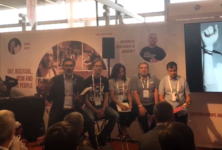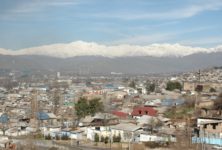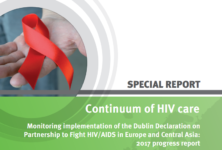Pre-exposure prophylaxis, or PrEP, and “test-and-treat” methods are both more cost-effective than the current strategy for the prevention of HIV transmission among men who have sex with men, according to researchers. The success of either strategy, however, depends on treatment initiation and adherence.
“[HIV] infects approximately 50,000 individuals each year in the United States. Despite strong evidence from randomized controlled trials on the preventive efficacy of PrEP, limited evidence supports its cost-effectiveness relative to other strategies,” Emmanuel F. Drabo, PhD, of the department of pharmaceutical and health economics, School of Pharmacy at the University of Southern California, and colleagues wrote in Clinical Infectious Diseases. “Cost-effectiveness studies of PrEP for the U.S. MSM population offer mixed results and have limitations: Most only compared scenarios implementing PrEP with scenarios without implementing PrEP, rather than comparing competing strategies.”
The researchers simulated HIV incidence among MSM in Los Angeles County aged 15 to 65 years. They then created an economic model to compare the cost-effectiveness of multiple HIV prevention strategies, including PrEP, test-and-treat, expanded testing and the status quo method (testing followed by ART for patients with CD4 ≤ 500 cells/µL). The researchers gathered data from previous studies, as well as the Los Angeles County annual HIV surveillance reports and a California state database to determine the initial population of HIV-infected MSM. Drabo and colleagues used life expectancy estimates from the CDC, and they calculated both the cost and quality-adjusted life years (QALY) for each method.
According to their findings, PrEP and test-and-treat methods produced the largest reductions in HIV incidence and were highly cost-effective compared with the status quo method. PrEP was estimated to cost $27,863/QALY, while test-and-treat would cost $19,302/QALY. The model estimated that status quo treatment would result in 99,874 HIV cases, while test-and-treat would prevent 4,332 (4.3%) of those cases, and PrEP would avert 58,881 (59%) cases.
Drabo and colleagues noted that the preferred treatment method would depend on budget concerns.
“Our results support prior findings that PrEP can be cost-effective in highly concentrated epidemic settings,” they said. “The optimal strategy depends on the costs society is willing to incur for HIV prevention. With constrained budgets, test-and-treat is the optimal policy and with less constrained budgets, test-and-treat combined with PrEP is the optimal policy.
“Overall these results [will] help policymakers and public health officials choose the optimal HIV prevention strategy given their budget constraints.”
In an accompanying editorial, Kenneth H. Mayer, MD, and Douglas S. Krakower, MD, both of The Fenway Institute and Harvard Medical School, wrote that the findings reported by Drabo and colleagues may help public health figures and policymakers consider ideal strategies to control the HIV epidemic.
“Although 85% of HIV-infected Americans are aware of their status, only approximately 30% are virologically suppressed with antiretrovirals,” Mayer and Krakower wrote. “This means that there are more than 500,000 Americans who are potentially infectious to their partners. Thus, test-and-treat strategies alone are not sufficient, particularly because HIV treatment entails a lifelong commitment to therapy.”
By Andy Polhamus
Drabo EF, et al. Clin Infect Dis. 2016;doi:10.1093/cid/ciw578.
Mayer KH, et al. Clin Infect Dis. 2016;doi:10.1093/cid/ciw582.


 ПОИСК ПО САЙТУ
ПОИСК ПО САЙТУ  поиск по ресурсному центру
поиск по ресурсному центру 


